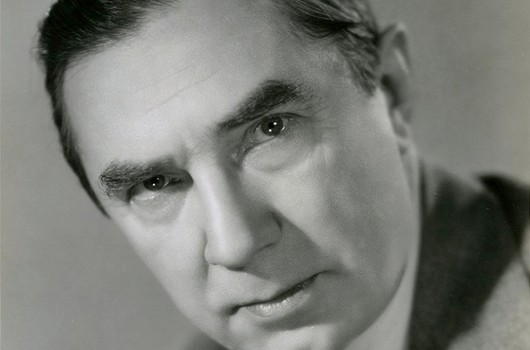
The Top 20 Bela Lugosi Films
Robert Segedy counts down his choices of the greatest Bela Lugosi movies.
Bela Ferenc Dezso Blasko was born in Lugos, Hungary on October 20, 1882. Lugosi was wounded in service of his country during World War I. He fled during the Hungarian Revolution of 1919 and appeared in several films made in Germany. A star on the stage in both the US and England, he starred in the Universal production of Dracula in 1931 and was instantly a sensation.
He made many appearances on both the stage and film as his career progressed, however due to his heavy accent, he felt that he was stereotyped into always playing the villain. He died on August 16, 1956 at age 73 of a heart attack and was buried in his “Dracula” cape. The world lost a great actor who is fondly remembered for his many horror film appearances.

Dracula (1931), director Tod Browning
This is the film that made Lugosi a household name and though many have tried, no one has replaced him as the Vampire King. Lugosi plays Count Dracula, a aristocrat who summons Renfield (Dwight Frye), a solicitor, to his castle in order to purchase Carfax Abbey in London. Lugosi had portrayed the Count on the British and New York stage for several years prior to the film being made, and he and Edward Van Sloan reprised their roles for the film version.
Carl Laemmle, the producer, was initially not interested in having Lugosi appear as the count despite having received good reviews for his performance for the stage; instead, several other actors were considered including Paul Muni, Chester Morris, Ian Keith, John Wray, Joseph Schildkraut, Arthur Edmund Carewe and William Courtenay.
How differently horror history would have been written if someone else had gotten the part that Lugosi was born to play! Lugosi portrayed Dracula as an undead nobleman, he moved with a slow eloquence, and when he spoke his lines were articulated with Lugosi’s heavy Hungarian accent. His Count is a weary sexual ghoul that yearns for the eternal sleep of the grave.
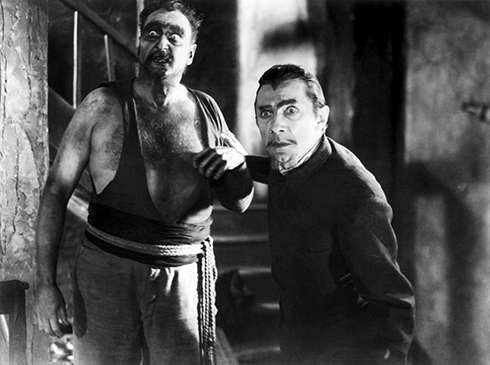
White Zombie (1932), director Victor Halperin
Fresh off of the success that was Dracula, Lugosi followed it up with this tale of the undead in Haiti, directed by Victor Halperin. Bela portrays Murder Legendre, the owner of a sugar mill in Haiti that is manned by zombies that do all of the labor. The film in general is pretty static and slow moving, but that is part of its charm. Think of how the films of this time period influenced director Guy Maddin (Tales from the Gimli Hospital).
The director Victor Halperin wanted to make a film that harked back to the silents, so most of the film depends upon the visuals to make the film move along. White Zombie was filmed on the back lots of RKO Studio and parts of an earlier De Mille epic were recycled, as well as some stages from the films Dracula and Frankenstein (1931). Lugosi based his character upon a previous German Film that he had made in the 1900’s; in it he played a hypnotist that had the the mesmerizing power of Svengali. Lugosi’s Murder Legendre always appears in black evening clothes as if he were on the way to the opera and just made a stop in the jungle. Some critics have been dismissive of this film, but I believe that it is one of Lugosi’s best performances.
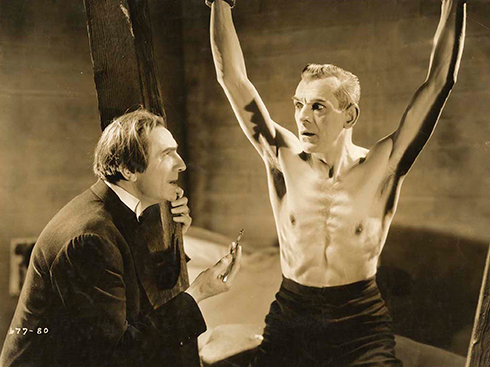
The Black Cat (1934), director Edgar G. Ulmer
Peter Allison: “Sounds like a lot of supernatural baloney to me.” Dr Vitus Werdegast: “Supernatural, perhaps. Baloney, perhaps not.” The Black Cat is a classic of low budget film making that has the charm of being the first time that Boris Karloff and Lugosi appeared together; the two would go on to make a total of 8 films together. Director Ulmer fashioned a film that” is one of the most beautiful and elaborate of all Universal Horror films with Poelzig’s Gothic-like mansion remaining a true masterwork of awe-inspiring art design and set decoration for art director Charles D. Hall and director Ulmer who impressively doubled as set designer.” (B-Movie Detective by Det. Abilene).
Lugosi plays Dr Vitus Werdegast, a widowed war veteran that is calling on his old nemesis architect Hjalmar Poelzig (Boris Karloff). The entire film is gothic in a subdued way with Karloff looking splendid as the devil worshipper Poelzig and Lugosi playing a sympathetic role. The two engage in a game of chess that is a matter of life and death and it all ends with Lugosi flaying Karloff alive. A great film from the two masters of the genre.
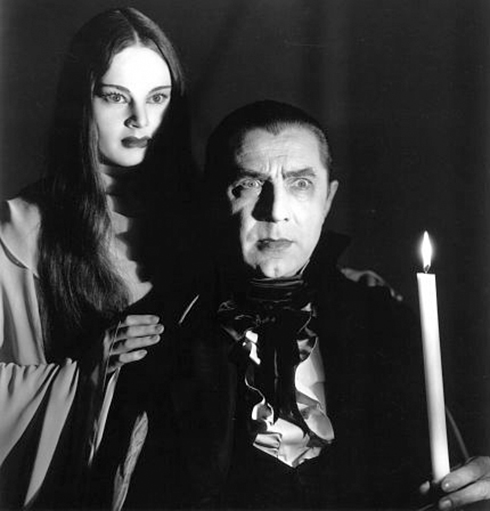
Mark of the Vampire (1935), director Tod Browning
Mark of the Vampire stars Lionel Barrymore, Elizabeth Allan, Bela Lugosi, Lionel Atwill, and Jean Hersholt; it is directed by Tod Browning. This is a talkie version of Browning’s London After Midnight with Lon Chaney, which is a lost film. The remake changes the names of several characters and some plotlines are altered. Sir Karell Borotyn (Holmes Herbert) has been murdered and two vampires have taken up residence in his creepy castle home. Professor Zelen (Lionel Barrymore) teams up with Inspector Neumann (Lionel Atwill) and the two are determined to get to the bottom of who killed Sir Karell.
Count Mora (Lugosi) and his daughter Luna (Carol Borland) supply the eeriness with their mute appearances, but it is the cinematography by James Wong Howe that really makes this film stand out with its mist covered graveyards and crumbling buildings. The use of a twist ending has been criticized by some, but overall the film is rather lively and interesting. Lugosi’s bullet wound make-up on his temple adds an entirely new layer upon the vampire character that he traditionally portrayed.
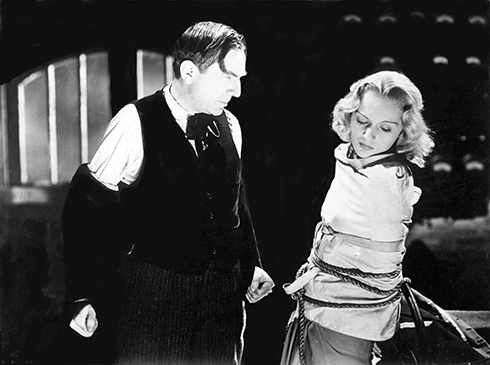
The Human Monster AKA Dark Eyes of London (1939), director Walter Summers
Based on an Edgar Wallace novel of the same name and more of a crime film that a horror vehicle, Lugosi is nonetheless entertaining as he portrays the sinister Dr Orloff, insuring various individuals and then bumping them off for the money. Set in London, various victims have been found drown in the Thames River, but they all have one thing in common: they have been insured by the diabolical Dr Orloff.
Classic Monsters of the Movies issue #6 features Dark Eyes of London
While using a home for the blind as his hideout, Orloff outwardly appears as a philanthropical insurance salesman, but the reality is that he is a mad genius. Orloff uses his blind henchman Jake (Wilfred Walter) as his go to guy for the dirty work and he is rather horrific in his appearance; he is dressed in a bulked up type of Frankenstein garb, has pointed ears, and has sightless eyes. One of the problems with the film is the extremely drab sets; they mostly resemble office sets, even Orloff’s laboratory is pretty boring looking. No zapping electrical sets here, merely used tables and chairs which does not add to the sense of menace. Lugosi is the only highlight here as he does his best in this British helmed production.
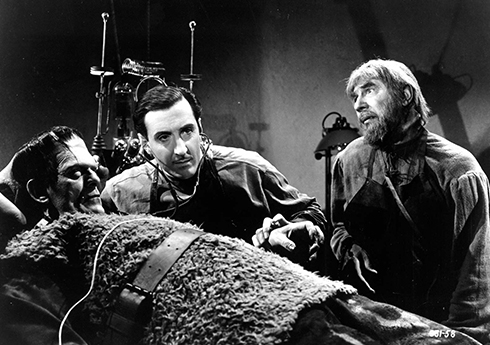
Son of Frankenstein (1939), director Rowland V. Lee
Lugosi stars as Ygor, a crippled former criminal that has survived the hangman’s noose for past crimes; he is seen living in the abandoned old Castle Frankenstein where he plays his melancholy sounding horn like instrument. Arriving fresh in town via train with his wife and child is the Baron’s son, Wolf (Basil Rathbone); he assures the town’s officials that he has no desire to carry on with his father’s work.
Inspector Krogh (Lionel Atwill) approaches the visitors; he has an all too fresh memory of the monster, plus he is missing an arm that the monster ripped out when he was a boy. 25 years is apparently not enough time to have passed; the villagers are still bitter about what happened the last time a Frankenstein was in town.
Wolf soon meets Ygor while inspecting the wreckage of the castle and Ygor reveals that he has kept the monster hidden and alive. Of course Wolf wants to explore his father’s theories, but is the monster controllable? This time around the monster (Boris Karloff) is incapable of speech; he moans and grunts, he is literally no more than a killing machine manipulated into executing the will of the bitter Ygor.
Lugosi is marvelous as the malevolent Ygor; his body is a broken vehicle, creaking with age and wear, and his lines are recited with relish, he is getting revenge on the men that had sentenced him to death. This is truly Lugosi’s finest hour as he shines as the sinister hunchback. For a sequel, this is a great film!
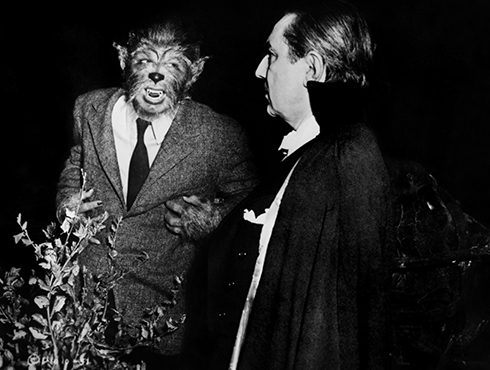
The Return of the Vampire (1943), director Lew Landers
Lugosi is Armand Tesla (obviously he is Dracula but Universal’s copyright prevented this from being said), a vampire in 1918 London. Physician Lady Jane Ainsley (Frieda Inescort) realizes that a vampire is on the loose and with the help of a friend (a werewolf), she locates the coffin and drives a stake through the night creature’s chest into his heart.
Many years later it is World War II and Lady Jane is still practicing medicine with the assistance of Andreas (Matt Willis), he once was under the vampire’s spell, but since the staking, he is now free. Two workers discover Tesla’s crypt and mistakenly remove the stake from his chest, allowing the vampire to once again stalk the London streets. Teamed up once again with his werewolf friend, who has the ability to speak(!), Tesla commences with his reign of terror.
Heavy on atmosphere such as fog covered graveyards and empty streets, this low end B Film allows Bela to once again portray our favorite vampire. This is a unique film that features a strong female protagonist that is not content to merely scream in terror and cringe. The talking werewolf adds a bit of incidental humor to the proceedings, but it is clearly Lugosi’s show.
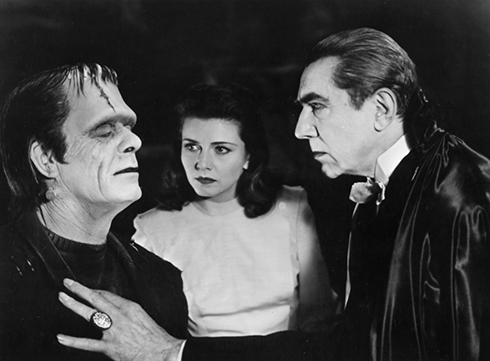
Abbott and Costello Meet Frankenstein (1948), director Charles Barton
Everyone’s favorite comedy duo are back once again, and this time they get to face a trio of Universal terror stars: Dracula (Bela Lugosi), the Frankenstein Monster (Glenn Strange), and the Wolf Man (Lon Chaney Jr.).
This film is more a tribute to monster film of the 30’s and 40’s than a vehicle for cheap laughs with Abbott and Costello; all three stars take their roles seriously and act as if they were in a horror film once more. Abbott plays Chick and Costello is Wilbur, a couple of freight handlers that suddenly find themselves menaced by the horrific trio.
Chaney plays Lawrence Talbot, a well meaning citizen that also just happens to turn into the Wolf Man when the moon is full; he calls, trying to warn the movers not to open the crates that are destined for a wax museum, but is too late. The moon is full, the monsters are on the loose, and the hilarity is on high.
A plot of some sort is introduced in which Wilbur’s puny brain is just the right size to be transplanted into Frankenstein’s skull; Bela is apparently the boss behind the entire operation, and it is so that the monster can be easily manipulated to do his evil bidding.
Unfortunately Jack Pierce was not around to do the makeup, but his protege Bud Westmore did a fine job and all three characters look good. Universal certainly struck paydirt with this film as it was cheaply produced, but was the second highest grossing of all the Universal films that year. Sadly this would be the last time that Bela donned the black cape and transformed into The Count.
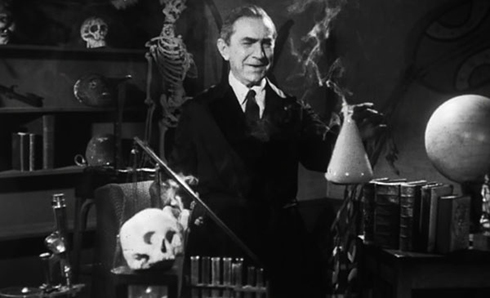
Glen or Glenda (Edward D Wood, 1953)
Now we hit hard times as Bela is forced to play as an extra in Ed Wood’s unintentionally hilarious Glen or Glenda. Wood made this semi autobiographical film to help explain why some men feel the need to be transvestites. As far as achieving this, I am unsure if his goal was reached or not, but nonetheless we have the first pairing of Lugosi and Wood working together.
Bela plays an odd role here, a narrator of sorts (or he could be God or merely a scientist) that speaks in odd riddles about various things. Bela is filmed in a darkened room sitting on a living room chair with some odd props about: a skull, assorted lab equipment, test tubes. Bela’s role here reminded me of the heavily burned man at the start of Eraserhead as he manipulates various levers and sets things into motion.
The plot is basic: the suicide of a transvestite brings the police inspector (Lyle Talbot) to see a psychiatrist (Timothy Farell) and to find out what this is all about. Dr Alton tells the inspector about two different cases: one about Glen (Ed Wood) and his issues, and the other regarding Alan (Tommy Haynes), a pseudohermaphrodite who undergoes a painful operation to become a woman.
Intermingled into these scenes are a strange dream sequence and a flashback within a flashback (narrative structure be damned!). Bela is given a stream of nonsensical dialogue that he spouts as best he can: “Watch out for the little dragon that sits at your doorstep. He eats little boys. Puppy dog tails, and big fat snails! Bevare! Take care!”
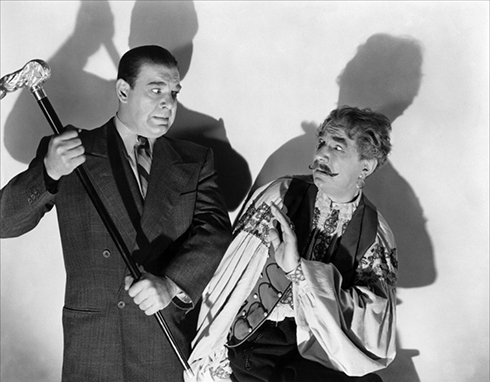
The Wolf Man (1941), director George Waggner
Lugosi doesn’t have a large part in the Chaney vehicle, but he is important because he is the Wolf Man that attacks Lawrence Talbot and infects him with the curse.
Larry Talbot (Lon Chaney Jr.), an American, returns to his ancestral home in Wales returning after many years of being away. We are told that his brother has recently died in a hunting accident and he is reunited with his father (Claude Rains) once again; Talbot is to take over supervising the family estate.
While in town he meets a local shopgirl (Evelyn Ankers) who tells Talbot of the local superstition of the werewolf; it is here that he purchases the silver headed cane that is used to dispatch the attacking creature in a later scene.
This film is singularly responsible for creating all the elements of the werewolf legend: the full moon, the poem that is recited, the use of a silver bullet to stop the beast, the pentagram on the palm of the becursed; all of these came from the mind of screenwriter Curt Siodmak. Maria Ouspenskaya is Bela’s mother, a gypsy that reads Talbot’s hand, and foretells his disastrous future, but it is Bela that is the original Wolf Man.
The Wolf Man’s makeup was designed and created by Jack Pierce, the man responsible for Boris Karloff’s makeup for both Frankenstein and The Mummy (1932).
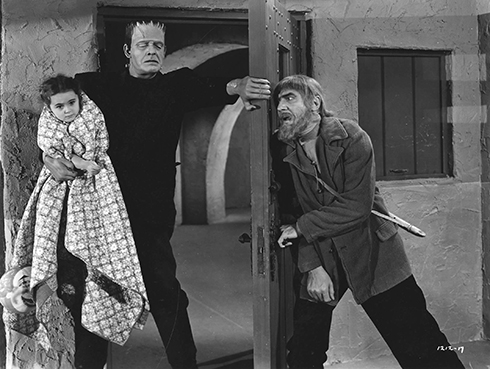
The Ghost of Frankenstein (1942), director Erle C. Kenton
This is the follow up to the previous hit from Universal, Son of Frankenstein (1939). Picking up where the previous film ended, both the monster (Lon Chaney Jr) and Ygor (Bela Lugosi) have survived yet again. This time around the monster is resurrected from the sulphur pit and the Baron’s other son, Ludwig Frankenstein (Cedric Hardwicke) is pressed into service to bring the monster back to life.
Ygor (Lugosi) who has miraculously survived being shot multiple times by the villagers is reunited with his old pal and the two pick up from where they left off. The new Dr Frankenstein is convinced that the criminal brain is the root of the problem and decides that a transplant is in order, but little does he know that Ygor has ideas of his own about where the brain will come from.
The problem with this film is that the script is weak and that Lon Chaney does not endow the monster with any of the sympathetic emotional overtones that Karloff did, even Lugosi’s Ygor is a little softer than in the previous film. Time wise this is the shortest film of the series, but it still makes perfect rainy day cinema anyway.
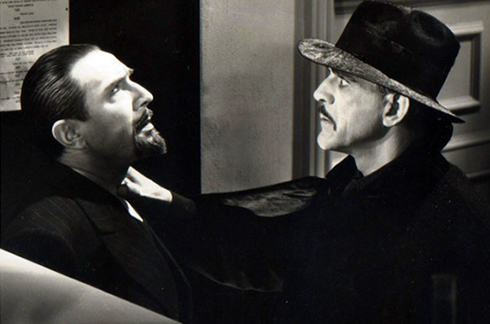
The Invisible Ray (1936), director Lambert Hillyer
The two biggest stars of modern horror share the screen once again in this vehicle which is frankly more sci-fi than horror. Karloff plays Dr Janos Rukh, a scientist that devises a telescope that can capture images from the distant past. Dr Rukh proselytizes the theory that a giant meteor hit Africa centuries beforehand and that it contains an element far stronger than Radium.
Accompanied by colleagues Dr Felix Benet (Lugosi), Sir Francis Stevens (Walter Kingsford) and several others, Rukh journeys to Africa to prove his theory correct. While there, Rukh locates the glowing meteor and becomes exposed to “Radium X”; a side effect is that he now glows in the dark and possesses a fatal touch. Dr Benet has discovered a formula for a vaccine that temporarily puts a stop to the disease, but there are only three shots of the miracle drug remaining, and the disease is driving Rukh insane.
Poor Bela doesn’t have a lot to do here, but be somewhat sympathetic as the friend to the raving Rukh. This film is literally divided into two parts: the first part is the science fiction part, but the second half is nothing more than a lukewarm mystery as Rukh gets his revenge on his partners. Worth a look for purists.
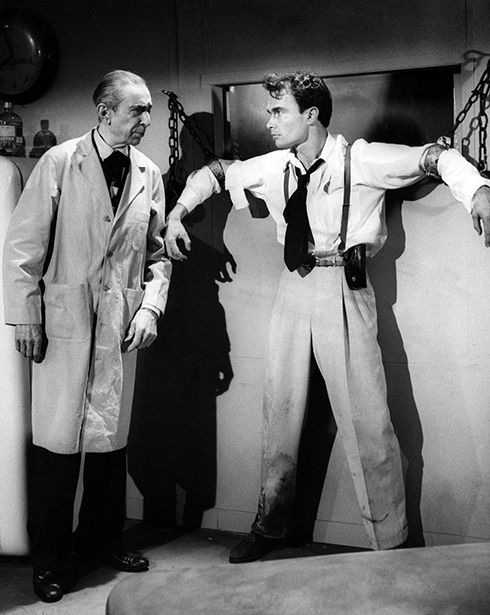
Bride of the Monster (1955), director Edward D. Wood
Here we are back in Ed Wood’s fevered world again. Bela portrays Dr Eric Varnoff, a vanished scientist kicked out of his home country. He has set up shop in an abandoned building that is most conveniently located right next door to a swamp featuring a large octopus.
The lab is really pathetic and features a refrigerator as a prop; likewise the plot to this film is questionable in its structure concerning Varnoff creating a race of atomic supermen. When visited by fellow countryman Professor Strowski (George Becwar), Lugosi’s Varnoff even gets to deliver a heartfelt speech. “Here, in this forsaken jungle hell”, he says, “I have proven that I am all right”.
It is this speech that is the highlight of the film as we see Bela really trying to emote his feelings to the viewer; at this point in time Lugosi’s morphine addiction was taking its toll on the actor. This is the best film of Wood’s mixed career, and includes an appearance by Swedish strongman, Tor Johnson.
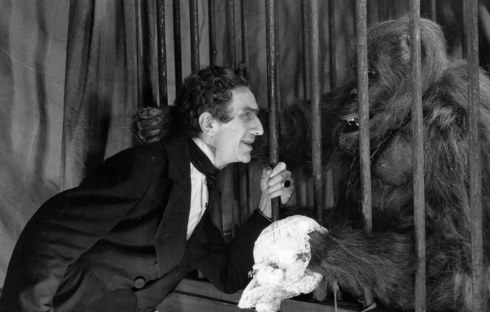
Murders in the Rue Morgue (1932), director Robert Florey
Another Poe inspired horror film, Murders in the Rue Morgue is a sort of guilty pleasure. This film was to be the first of a triology of horror films starring Lugosi for Carl Laemmle Jr. and Universal Studios, with The Black Cat (1934) and The Raven (1935) being part of the trilogy.
Teamed up with cinematography from Karl Freund (The Golem), Murders is a exercise in too much style over substance, with Florey unable to utilize the talents that he has before him. The plot is a bizarro pulp narrative that features Lugosi as a charlatan carnival pitchman who executes his experiments in mixing the blood of an ape with humans in a 19th century basement morgue.
This is a pre-code production so it does show the abduction of a street walking prostitute that is disposed of rather rudely via a trap door in the floor into a nearby river. Lugosi is interesting to watch as the bloodthirsty Darwinist.
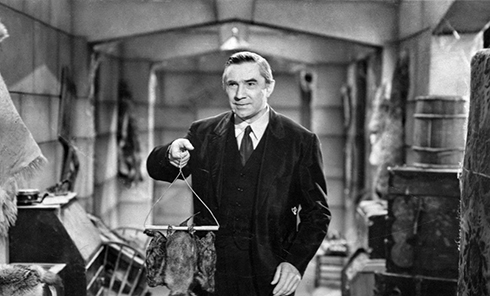
The Devil Bat (1940), director Jean Yarbrough
IMDB offers the following succinct summary for the plot of The Devil Bat: “A mad scientist develops an aftershave lotion that causes his gigantic bats to kill anyone who wears it.” That is all you need to know; turn off your brain, sit back and relax, enjoy watching as Bela Lugosi portrays Dr Paul Carruthers, yet again another mad scientist that is in search of revenge upon an uncaring world.
Classic Monsters of the Movies issue #22 features The Devil Bat
In his hidden attic laboratory, Dr Carruthers has created a giant type of bat that is attracted to a certain aftershave that he has created; it is through this giant creature that the gentle doctor will exact his revenge upon the families of the wealthy Heath and Morton families. You see, Dr Carruthers has worked in the cosmetic business and he is jealous of the wealth that his employers have reaped while he has done all the work. It is only right that Carruthers get his proper comeuppance from the work of the Devil Bat!
I must admit that I have a soft spot for this poverty row production, but Lugosi is really enjoyable in his role of the crazed but gentle Dr Carruthers.
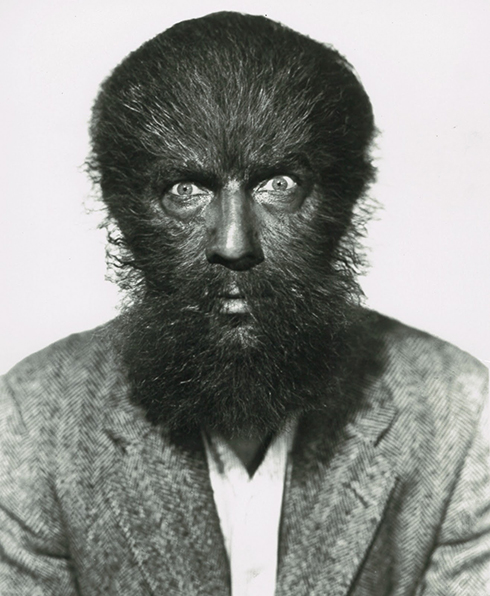
Island of Lost Souls (1932), director Erle C. Kenton
Here we have a lost gem of a film! Many of us grew up seeing the black and white stills of this film in Forrest Ackerman’s Famous Monsters of Filmland magazine and I remember being intrigued by the plot and the various shots of the creatures that inhabit Dr Moreau’s island.
Erle C. Keaton’s production is a pre-code wonder that features many amazing moments; based on H.G. Wells novel, The Island of Dr Moreau, this film includes some expressionistic photography by Karl Struss, some marvelous ahead of its time makeup effects courtesy of Wally Westmore, and great performances by Charles Laughton and Bela Lugosi.
The plot is that of a disturbed dreamer as Dr Moreau experiments with various creatures on the island in his House of Pain, which features such atrocities as a merging of man with a leopard and Lota, the Panther Woman (Kathleen Burke). Lugosi is excellent as the Keeper of the Law; there is no mistaking that accent when he recites the Law: Are we not men?” Leonard Maltin remarks that Island of Lost Souls is “exquisitely creepy” and that “some of the black-and-white images photographed by Karl Struss took my breath away.” -Movie Crazy http://www.indiewire.com/2011/10/for-love-of-celluloid-180907/.

The Raven (Lew Landers, 1935)
Dr Richard Vollin (Béla Lugosi) is a skilled surgeon that is called out of retirement to operate on a young dances that has suffered a near fatal accident. Vollin is a strange bird to put it lightly; he is obsessed with the writings of Edgar Allen Poe, so much so that he has an entire basement stocked with all types of torture implements inspired by Poe, and he is dying to put them to use.
Into this plot wanders escaped criminal Edmond Bateman (Boris Karloff), a man that wanted the famed doctor to change his looks through the use of plastic surgery; Vollin certainly holds true to his word as Bateman’s features are twisted into a gruesome mask after the surgery. Vollin will make him look normal again, but first he must assist the doctor with a plan to gain revenge on his unrequited love interest and her meddlesome father and fiancé.
Once again we find Lugosi and Karloff paired up together in the hopes that the two of them would conjure up some magic, but the only worthwhile thing happening in this low budget wonder is that Lugosi really rules this picture with his fiendish chuckle and diabolical plans. A worthwhile attempt at bringing Poe to the screen.

The Gorilla (Alan Dwan, 1939)
Man, the Ritz Brothers are hardly in the same book as The Three Stooges when it comes to delivering the laughs, but here they are along with stalwart stars as Patsy Kelly (as the screaming maid), Lionel Atwill as a threatened industrialist, and Bela Lugosi as a stoic manservant in Dwan’s tragic mess, The Gorilla.
Classic Monsters of the Movies issue #15 features The Gorilla
With a title like that, you can be sure of one thing: that a guy in a gorilla suit is gonna make an appearance, and even with the hijinx of the Ritz Brothers added, this film still stinks. Based on a 1925 play of the same name, the Ritz Brothers did not want to star in this production and afterwards were dropped by Twentieth Century Fox. Lugosi is in it, but he doesn’t do much except walk around the big mansion wearing an odd little smile. This has got to be better than appearing in an Ed Wood film!
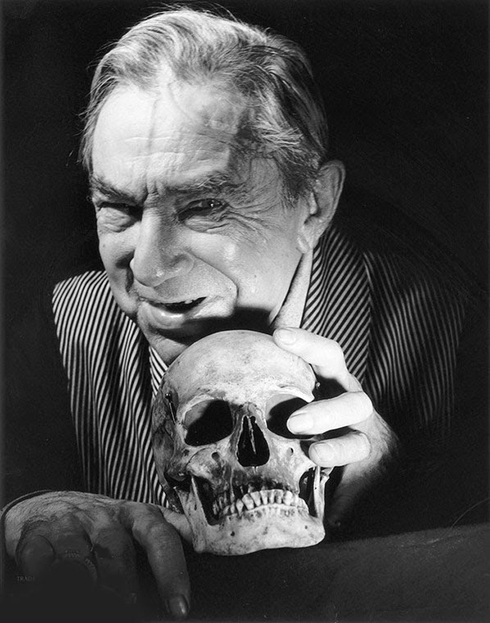
The Black Sleep (Reginald Le Borg, 1956)
A guilty pleasure of a film if there ever was one. Talk about an all star cast: Basil Rathbone (Sir Joel Cadman), Akim Tamiroff (Odo), Lon Chaney Jr. (Mongo), John Carradine (Bohemond), Bela Lugosi (Casimir), Tor Johnson (Curry); literally a who’s who of horror, but the overall film is a plodding mish mash of mad scientist plot mixed up with some body snatching story.
Classic Monsters of the Movies issue #16 features The Black Sleep
Poor Bela plays a mute man servant that has lost his powers of speech due to Sir Joel’s scapel. There is one scene where Bela is carrying around some bed warmers and there is the sound of thunder; Bela looks directly at the camera and shrugs indifferently as if to say, here I am, in another cheap horror film, what can a poor actor do? A missed opportunity by director Le Borg.
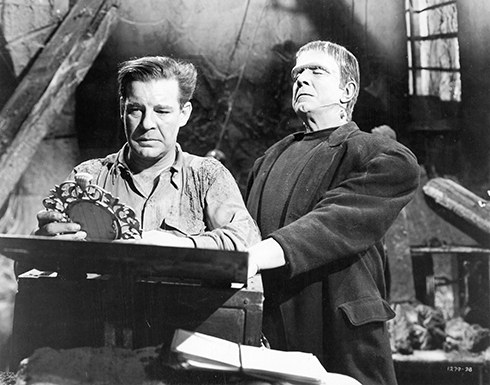
Frankenstein Meets The Wolf Man (Roy William Neill, 1943)
This is the fith film by Universal in the Frankenstein saga and this time Bela Lugosi gets to play the monster. Made after The Wolf Man film and The Ghost of Frankenstein, you get the feeling that the tank was starting to run low in the creativity department. We end up in Wales where Talbot is seeking some kind of a solution to the problem and after talking to the gypsy woman Maleva (again played by Maria Ouspenskaya), he is told to find Dr Frankenstein, but alas, he is dead.
Lugosi plays the Monster pretty badly, with outstretched arms and that may be because he is blind (problems with script continuity are to blame). This is more of a sequel to The Wolf Man films than a sequel to Ghost of Frankenstein, with the Frankenstein Monster just tossed in for added drama. The ending has both creatures being drowned as a disgruntled villager blows up the dam, but don’t worry any, they all return again in House of Frankenstein (1944).
Article by Robert Segedy.










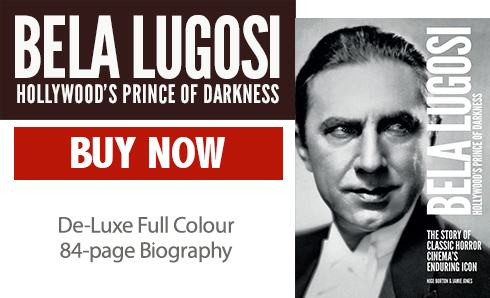
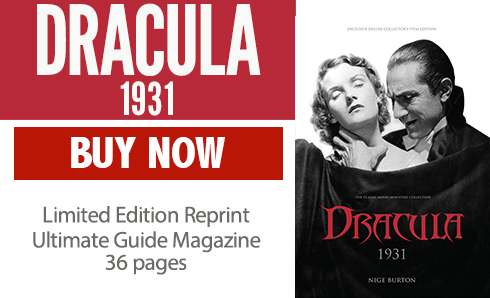

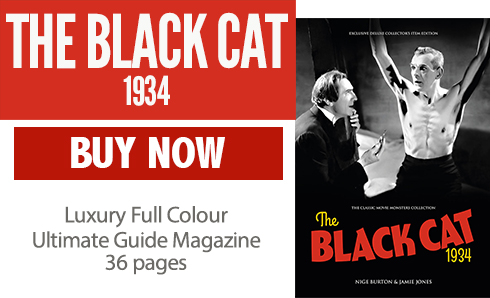
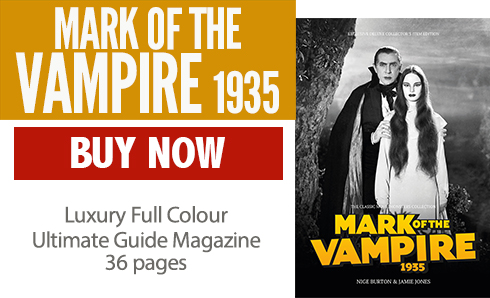
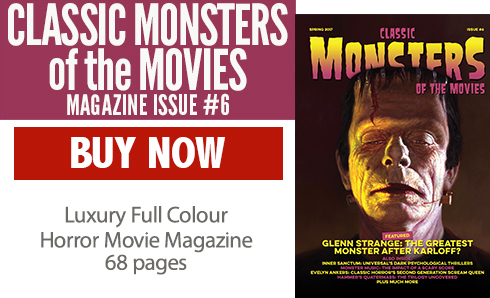
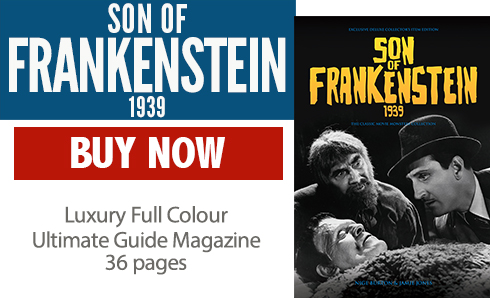
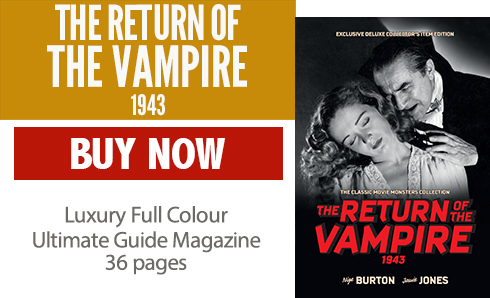
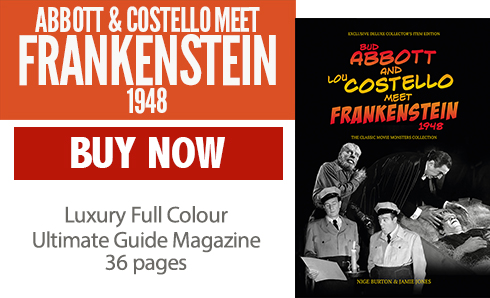
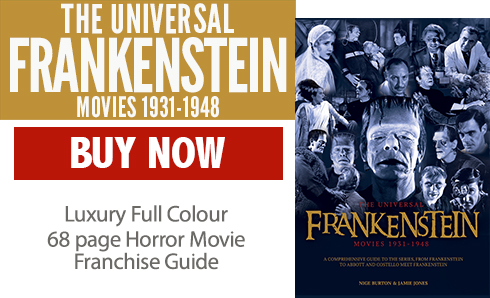
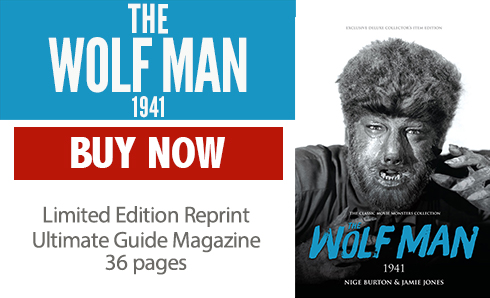
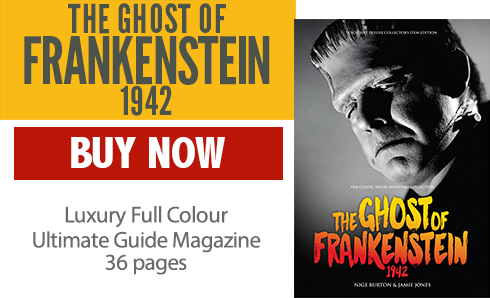
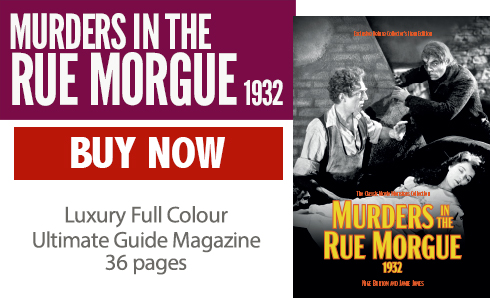
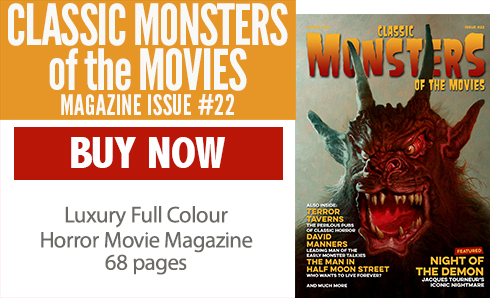

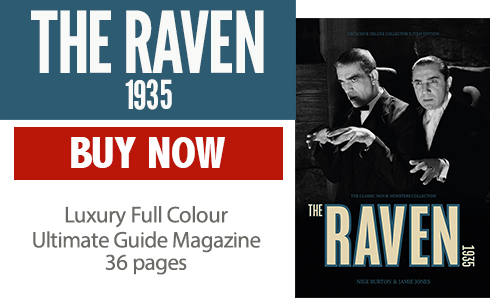
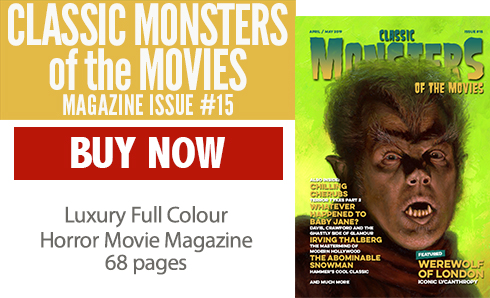

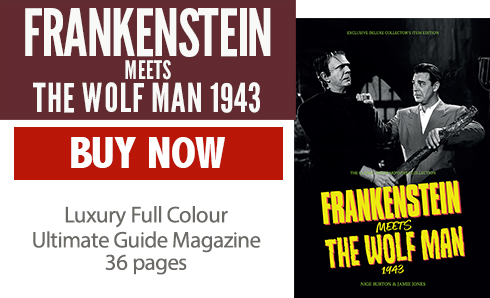
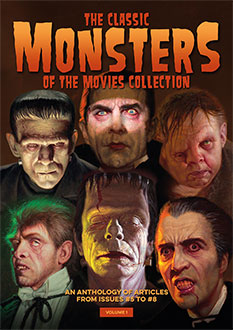
Nicely done. My choices would be:
Dracula
White Zombie
The Black Cat (best horror movie of all time for my money)
Son of Frankenstein (deserved an Oscar for Ygor!)
Murders in the Rue Morgue
The Raven
Island of Lost Souls (“Are we not men!?”)
The Wolf Man (small part, but well played; great horror film)
Frankenstein Meets the Wolf Man
Return of the Vampire (should have been titled “Return of Dracula”)
Ghost of Frankenstein
The Invisible Ray
The Devil Bat
The Corpse Vanishes
Bela plays the monster in FRANKENSTEIN MEETS THE WOLFMAN as Ygor. That’s because Ygor’s brain was transplanted into the monster at the end of THE GHOST OF FRANKENSTEIN. As for the Karloff monster, he’s gone forever. The brain became surgical waste. “Ygorstein” goes blind at the end of GHOST hence the blindness and outstretched arms on FMTW. Curt(DONOVAN’S BRAIN) Siodmak write the screenplays for THE WOLFMAN, GHOST OF FRANKENSTEIN, FMTW and HOUSE OF FRANKENSTEIN and kept the continuity. Unfortunately the top brass at Universal muted Bela’s dialogue robbing his performance and posterity. As the cut footage seems to be lost there is little hope we will see the film as Siodmak meant us to. MURDERS IN THE RUE MORGUE is # 3 on my list after DRACULA and WHITE ZOMBIE. Enjoyed your piece.
Lugosi was also the subject of ” Bela Lugosi’s Dead “, the first single by the English band Bauhaus. Released in August 1979, it is often considered to be the first gothic rock record.
Saw most of them when I was a kid and have only seen several of them a few times since but “Dracula” is still a must-see when it airs as is “The Wolf Man” even if Lugosi has only a brief role